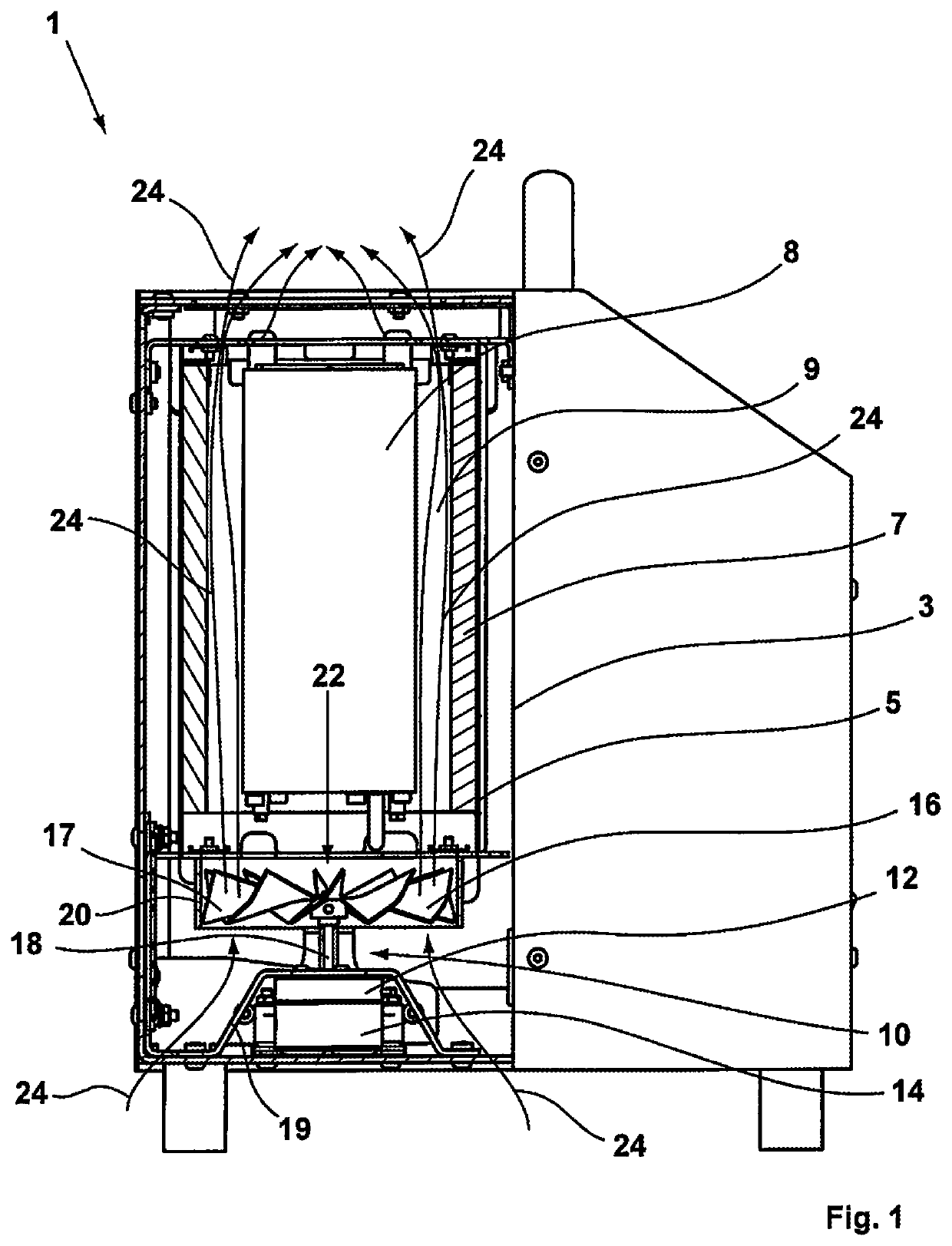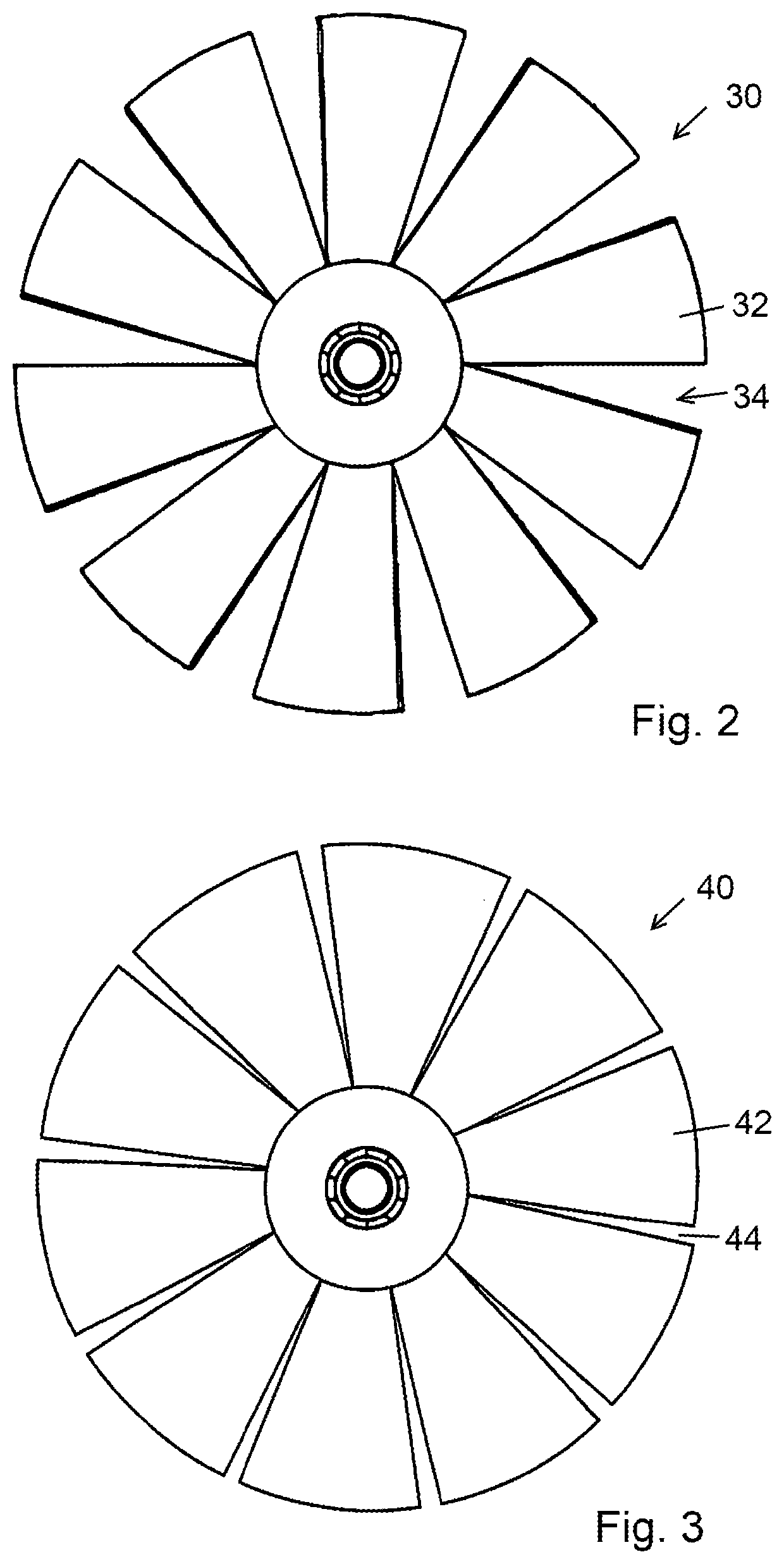Temperature calibrator
a calibrator and temperature technology, applied in the field of temperature calibrators, can solve the problems of wasting unnecessary energy, complex and the likelihood of failures to increase, and disadvantageous effect of efficiency both during cooling and heating, and achieve the effect of increasing efficiency in the heating-up phas
- Summary
- Abstract
- Description
- Claims
- Application Information
AI Technical Summary
Benefits of technology
Problems solved by technology
Method used
Image
Examples
Embodiment Construction
[0020]The temperature calibrator designed as a whole by 1 comprises the outer metal housing 3 and, spaced apart therefrom, the inner metal housing 5. The calibrator block 8 is located radially spaced apart from the inner metal housing 5 while forming a sleeve-like flow space 9. The inner metal housing 5 has an insulation 7 on the side facing the calibrator block 8 to prevent the outer metal housing from becoming too hot to avoid burns to the operators on it where possible. In the installed state below the calibrator block 8, the fan marked by 10 is located, with the fan marked by 10 having a motor 12 and a motor fan 14 for cooling the motor 12 that is located below the motor 12. The fan wheel 16 that is arranged in a so-called annular housing 20 is driven by the motor 12. The motor 12 is connected to the fan wheel 16 by the motor shaft 16. The motor shaft 18 is selected as comparatively long, with the length of the shaft 18 being in relation to the temperature that the motor is able...
PUM
| Property | Measurement | Unit |
|---|---|---|
| temperatures | aaaaa | aaaaa |
| temperatures | aaaaa | aaaaa |
| temperature | aaaaa | aaaaa |
Abstract
Description
Claims
Application Information
 Login to View More
Login to View More - R&D
- Intellectual Property
- Life Sciences
- Materials
- Tech Scout
- Unparalleled Data Quality
- Higher Quality Content
- 60% Fewer Hallucinations
Browse by: Latest US Patents, China's latest patents, Technical Efficacy Thesaurus, Application Domain, Technology Topic, Popular Technical Reports.
© 2025 PatSnap. All rights reserved.Legal|Privacy policy|Modern Slavery Act Transparency Statement|Sitemap|About US| Contact US: help@patsnap.com


